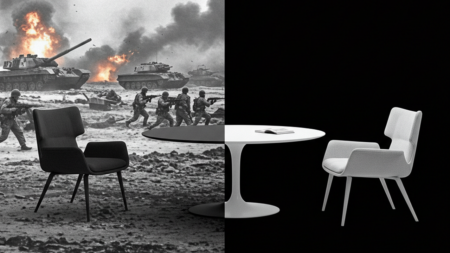Furniture is one of the most long-lasting items in your household, but if not cared for, it can look dull and worn after years of use. Take a couch for example; it goes though a lot of use and wears out or gathers stains and begin to show its age. Instead of purchasing a new sofa – which can cost a lot – you can opt for an eco-friendly alternative: reupholster the old couch. But remember, sofa reupholstering only works if the frame isn’t broken or damaged.
By reupholstering, you not only give the aging sofa a new lease of life but reduce your carbon footprint and save it from the landfill. While you can get it done by a local professional, transforming a couch with a DIY reupholstery job is quite satisfactory and you’d have learned a useful new skill. This eco-friendly and sustainable option will give your space a complete makeover and restore a fresh look for your couch.
What is Reupholstery?
Reupholstery is a practice to reinstate the former glory of good quality furniture that has seen better days. It is an impeccable way to restore a piece without compromising on the comfort and style of the original design. The method requires removing old fabric from the sofa to replace it with a new fabric. It only works on a piece with a strong frame that is not broken or damaged in any way.
Although there are qualified professionals to reupholster your couch, an economical shopper can do it as a relatively budget-friendly DIY project without having to pay thousands of dollars to a professional. Keep in mind that the process is time-consuming and requires some elbow grease to get the job done perfectly.
Refurbishing isn’t an easy undertaking but it has satisfying returns. Here are a couple of reasons you must consider reupholstering old furniture. If none fit the bill or the couch is damaged beyond repair, you are better off buying a new piece.
Things to Consider
Is the Couch Family Heirloom: If the sofa is a family heirloom and has sentimental value, you may want to save it. Given the foundation or the frame of the couch is still strong, you can save it through reupholstery. You can pick a similar fabric or upholstery method to maintain the existing style.
Is it a Valuable Antique: When you purchase something vintage, say dating back over a century, then it makes sense to preserve it as you’ve already invested good money in it. This way, you are restoring an antique but you should probably let a professional take up the job unless you are well-versed in the art of upholstery.
Couch Has Good Structure: You probably do not want to replace your old sofa if it has a good, sturdy, high-quality frame or an unusual structure, which might be hard to find again. With a few yards of fabric, you can reupholster it and give it a new life.
You are Eco-Conscious: Sustainability has become a vital factor in modern homes. Homeowners are focusing on reducing their footprint and helping save the environment. For such people, reupholstering an old couch is a smart and eco-conscious pick. Even though you are using some new material for the task, you are saving a major piece from ending up in the landfill.
After going through these four points, if you are still here that means that you really want to keep your old piece of furniture and give it a new lease on life. Well, that is a wise thing to do. But do you know how to do it? If not, here is a detailed guide to help you on your DIY sofa reupholstering journey. See you on the other side!
Things You’ll Need for the Task
Tools: Staple remover, staple gun, needle nose pliers, flathead screwdriver, strong fabric scissors, and paintbrush (optional)
Materials: Several yards of upholstery fabric (depending on the size of your sofa) and heavy-duty staples. Here are some optional materials including a sewing machine, sandpaper, fabric glue, furniture stain, furniture sealant, and furniture paint
Steps for DIY Sofa Reupholstering
Step 1: Inspect and Measure the Couch
Check your furniture for any wear and tear, and visible sections that need reupholstering including the arms, backrest, sides, interiors and cushions, and hidden areas as well. For instance, if the cushions feel saggy, you should get a high-quality sofa cushion foam to refill them. Check each layer of upholstery individually to see what can be reused and what needs to be replaced.
Then measure each piece of fabric on the couch. Take precise dimensions of the outside couch fabric, interior fabric, the dust cover on the underside, and any round cording. Write all the measurements and use them to determine how much fabric you have to purchase for the project. Purchase more fabric than you need.
Step 2: Remove old Fabric and Dust Cover
Turn your sofa upside down and remove the dust cover. You should use a staple remover to remove the staples holding the dust cover in place and take it off. If you don’t have a staple remover, use a needle nose plier and flathead screwdriver to remove the staples, carefully.
Be sure not to cause any rips or tears during the process. See if some of the fabric is functional and can be reused. Get rid of the old upholstery layer by layer, making notes of what goes where and how it was stretched. If you do not want to remove the old fabric, just attach the new fabric over the top of it.
Step 3: Stuff the Cushions as Required
Once the couch cushions are removed and uncovered, restuff the cushions to make them plump and new again. Be sure not to over-stuff because it will make your sofa look over-the-top and kitschy. Restuffing your old couch can do wonders and save you the expense of buying a new one.
Stuffing or poly-fill is easily available at a local craft or big box store. If that seems extra expense, you can buy used pillows or cushions from a thrift store, and cut them open to reuse the stuffing for cushions to make them plump again.
Step 4: Refinish the Frame
After the removal of all of the old upholstery fabric, the padding and frame of the couch are left for tending. If you don’t like the style of the frame anymore, it could be painted, stained, sanded or whatever you desire to give it a fresh style before reupholstering it.
If you are going to stain or paint the frame, you should add a sealant to prevent it from seeping onto clothes or cushions. However, if you own an expensive vintage couch or a family heirloom, you may want to avoid refinishing it as it can ruin the finish.
Step 5: Reupholstering
Before you begin the process, make sure that you cut the upholstery fabric in exact measurements. You can use the old fabric for patterns to cut the new fabric. You can use the notes as a reference as well, and attach the new upholstery using the notes as a general guide. Begin by attaching the last piece you removed first, and keep going in the reverse order in which you took off the old fabric.
Start with the fabric panel of the front of the sofa, moving to the arms and then to the back. Stretch the fabric to keep it tight and use the staple gun to staple it onto the couch frame. Also, using heavy-duty staples is important as holding the fabric tightly is a tough job. Make sure that there is no portion of the upholstery left loose as it would cause wrinkles after each use.
Step 6: Don’t Forget the Dust Cover
Once the reupholstering of the couch is done, reattach the dust cover. This piece of cloth will cover up the staples underneath, giving it a neat and tidy look. As it is under the couch and won’t be visible so you can reuse the dust cover from the old fabric if it’s intact.
Ensure that you use a piece that matches the new upholstery to give it a seamless look. Also, you must use a thicker fabric as a thin cloth will not last long and you will have to go through the entire process all over again.
Step 7: Add Finishing Touches
Many people like to add decorative trim to cover up staples and add an attractive touch. If you want, you can get some matching trim and use strong fabric glue to attach it to your couch and make it prettier. It will give your sofa a nice finished look and cover up any slip-ups in the stapling during the process. It’s important that you find strong, high-quality fabric glue.
You can also add a couple of finishing touches to your reupholstered sofa. You can sew cute matching pillow covers to go with the throw pillows using any leftover fabric. Here, you can show off your creative skills.
Follow Homecrux on Google News!




